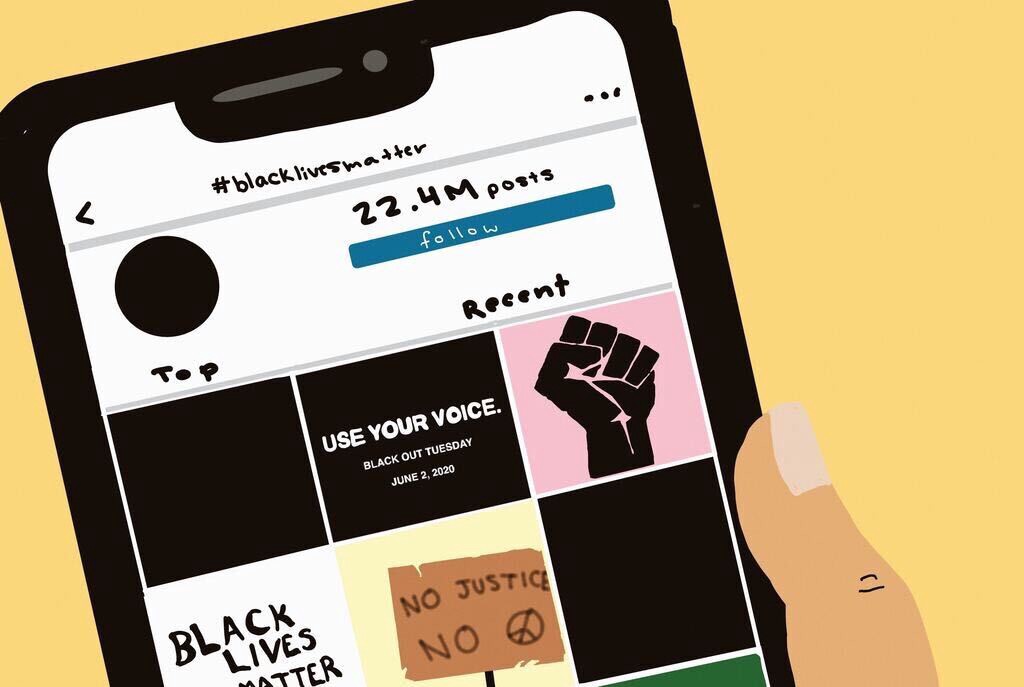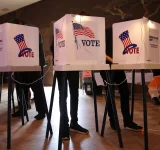In today’s world of social change and with ‘woke’ culture, activism is all around us. Be it for social justice, animal rights, gender equality, global warming, or education, activists undoubtedly play a crucial role in keeping governments and policies in check. Activists like Malala Yousafzai, Hunter Schafer, Greta Thunberg, Julian Assange, and many more, are passionate about their causes.
However, when social movements take the world by storm and gain public or international traction, performative activism comes to light in many instances. Performative activism is essentially when celebrities or organizations momentarily take an interest in social movements when they are not passionate about or true to the cause and fail to make a real-world impact.
As awareness of movements like the Black Lives Matter movement has grown since the death of George Floyd, performative activism has become almost widespread. The term has since gained notoriety for detracting attention from genuine activism. Examples of this such imitation of real activism range from celebrities disregarding their privilege to Instagram posters drowning out informative posts with rhetorical statements obvious to those actively fighting for the rights of minorities. It is generally targeted to increase one’s own social capital. With social media platforms, performative activism often takes place online when influencers, celebrities, or organizations repost hashtags and limit their activism to only speaking about and supporting a social cause on social media platforms.
You could say that there is nothing wrong with individuals speaking about a social cause only on social media as it raises awareness. However, these campaigns and movements align with GenZ’s social activism through social media platforms, and in the midst of all this, some individuals jump on the activist bandwagon reducing the entire cause to a mere trend only to last for a few weeks.
An example of performative activism, also known as Slacktivism, would be the black square pictures that temporarily took over Instagram in the Summer of 2020. This was referred to as #BlackoutTuesday. This viral trend is an iconic illustration of performative activism as most people were not aware of what they were posting and eventually, swayed the campaign in another direction.

Jamila Thomas and Brianna Agyemang, two Black women working in the music industry, created the #BlackoutTuesday online initiative. These women were urging their coworkers to take a day off work to recognize how frequently Black talent and artists in the industry were overlooked and given due credit. #BlackoutTuesday quickly turned into a widespread Instagram campaign. Soon, feeds were overrun with nothing but black squares as a show of support and solidarity. However, somewhere down the line, the campaign shifted from its main agenda and became a symbol for standing in solidarity with the Black community as a whole. Many individuals failed to understand the campaign’s specific significance and began displaying their support for the Black Lives Matter movement. Although this is necessarily not a bad thing, it distorted what the #BlackoutTuesday campaign was trying to do. The #BlackLivesMatter hashtag, which has been used to communicate crucial information concerning protests, police aggression, and the deaths of George Floyd, Breonna Taylor, Tony McDade, and others, was flooded by millions of individuals, complicating and merging the two movements.
One of the main issues with performative activism is that it undermines the goal of activism, which is to acknowledge the victims’ trauma and the injustices done to them and accordingly, implement the required change through meaningful actions. The tendency to minimize the activism impact comes when individuals take up performative activism. Eventually, the campaigns’ efforts are hampered and its ability to make a difference is reduced as the campaign is likely to lose traction after some time.
Simply put, it turns real problems into 24-hour stories or trendy hashtags that are only briefly glanced at or scrolled past.
For instance, in Bangladesh many individuals appeared startled and horrified by the brutal attacks the Hindu community faced during the October 2021 festivities of Devi Durga. However, only a handful of people were prepared to acknowledge the negative attitudes and behaviors that not only society instills in people through stereotypes and other forms of bigotry, but also take necessary action to address the problem actively. This might perhaps be a reason why Bangladesh witnesses religious hate crimes so often.
Another issue is that performative activism tends to turn social movements and activism into a trend. As people join in on the trendy bandwagon, no concrete steps end up being taken, and eventually, social issues are forgotten. For example, following the deaths of eight Asian-American women in Atlanta, hashtags like #StopAsianHate became popular on Twitter. Despite the virality, there is a significant difference between using a hashtag and taking part in local campaigns to end racial discrimination.
At the end of the day, writing and sharing a three-word remark is not powerful and impactful enough to bring about significant change for a deeply ingrained issue and ensure security for the community in question. With the hashtags, Asian communities all over the world were shaken. However, as time went on the movement seemed to have lost traction and now, we only see news posts of such crimes which receive a few thousand shares.
Like any other social justice tool, performative activism does increase some awareness. However, is it enough?
It all eventually boils down to how you feel about the particular movement – are you sharing a post because everyone else is or does the cause genuinely concern you? It might be worth asking yourself if you are willing to take any concrete action outside of social media before posting something to bring attention to the campaign. Attending protests, signing petitions, calling out people around you who are aggravating the problem and go a long way in attaining sustainable change.
It is important to remember that while social media posts and awareness can contribute to the movement, they can only go so far. Unless your actions stimulate or encourage change beyond the trend, is your activism a show or a genuine concern?






















